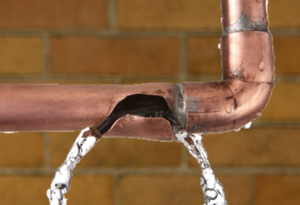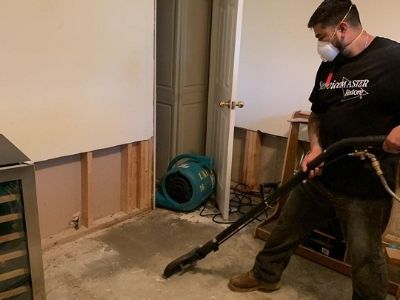Identifying a Pipe Burst and Swiftly Fixing It Properly
Identifying a Pipe Burst and Swiftly Fixing It Properly
Blog Article
This great article which follows about How to Prepare for Your Dishwasher Installation is quite enlightening. Don't overlook it.

A burst pipe is a significant emergency; you can only stand as you see water you pay very much to reunite with the planet. In worse instances, you discover a swimming pool on your kitchen flooring, which is a fantastic journey risk, specifically if you have kids around. If the pipeline that burst remained in your wall surfaces, problem: you may require to paint that entire area.
How can a calamity like a ruptured pipe be prevented and taken care of? Well, by listening to your specialist emergency plumbings and also following these policies.
Just how do I know when my pipelines have burst?
Changing water stress
Pipes do not just burst in a day. You might have noticed that your kitchen area faucet or shower doesn't run right away when you turn the faucet. It might stop for a few seconds and after that blast you with even more pressure than typical.
In other instances, the water may seem typical in the beginning, then drop in stress after a couple of secs.
Wet wall surfaces and water stains
Prior to a pipeline bursts, it will leak, a lot of times. If this relentless leaking goes unnoticed, the leak may graduate into a broad tear in your pipeline. One easy way to avoid this emergency is to keep an eye out for damp wall surfaces advertisement water stains. These water stains will lead you right to the leak.
Puddles under pipes as well as sinks
When a pipeline ruptureds, the outflow develops a pool. It might appear that the pool is growing in size, and also no matter the number of times you wipe the puddle, in a couple of minutes, there's one more one waiting to be cleansed. Typically, you may not be able to trace the pool to any type of visible pipes. This is an indicator to call a specialist plumber.
Untraceable trickling noises
Pipe bursts can occur in one of the most undesirable areas, like within concrete, inside walls, or under sinks. When your home goes silent, you may have the ability to listen to an aggravatingly consistent leaking sound. Even after you have actually checked your shower head as well as kitchen tap, the dripping might proceed.
Dear reader, the leaking may be coming from a pipeline inside your wall surfaces. There isn't much you can do concerning that, other than tell a professional plumber.
Shut off the Water
When water ices up, it expands in volume by concerning 9 percent. As well as it increases with incredible pressure: The stress inside pipelines might go from 40 extra pounds per square inch to 40,000 psi! No pipe can hold that much pressure, so it bursts. The break might take place where the ice forms, yet regularly, it takes place where water pressure finds a weak point in the pipe. That might be inches and even feet from the frozen area. Locate the water shutoff valve as well as turn off the water to stop even more damages. You might also need to turn off the electricity also, depending on where the leakages takes place and also exactly how big it is.
Contaminated water
Many people assume a ruptured pipe is a one-way outlet. Fairly the contrary. As water flows out of the hole or wound in your plumbing system, pollutants find their method.
Your water may be polluted from the source, so if you can, inspect if your water storage tank has any kind of troubles. Nevertheless, if your drinking water is supplied and purified by the local government, you must call your plumber instantly if you see or smell anything amusing in your water.
What do I do when I detect a burst pipeline?
Your water meter will continue to run also while your water wastes. To decrease your losses, find the primary controls as well as transform the supply off. The water pipe are an above-ground structure at the edge of your home.
How to Fix & Detect a Leaking Pipe
How Do I Know if a Pipe is Leaking?
Leak detection tests can help you determine if your pipe has a leak. Even if you don’t see an apparent leak, you should still conduct leak detection tests regularly to save water and money—and prevent major damage to your home.
Water meter. It can be helpful to figure out what your usual water meter usage numbers are and then monitor them regularly. To monitor your meter, first, turn off all water faucets in your home. Check the meter and write down the numbers. In a few hours, check the meter again. If the numbers have changed, you have a leak. Water gauge. Use a water gauge to test your water pressure. Your showerhead should produce a certain amount of water pressure based on its model and design. If the pressure is lower than it is supposed to be for that specific showerhead, your home likely has a leak. Puddles. Look inside your bathroom, laundry, and kitchen sink cabinets. Puddles around the cabinets or around toilets, tubs, showers, and washing machines indicate the presence of a leaking pipe. You may also notice loose tiles, peeling or flaking paint, or mold caused by water accumulation. Napkin test. Even if you don’t see any puddles, you may still have a leak. You can test for water leaks in the bathroom, laundry, and kitchen by wiping below-sink connections with a napkin, paper towel, or piece of toilet paper. If it becomes damp, you probably have a leaking pipe under the sink. Discolored walls. Walls that are discolored—usually with brown or yellow stains—or bulging might mean that they have been impacted by water damage caused by a leaking pipe. Smell. A leaky pipe will create sitting water, and over time, that water may develop a musty smell. If your home smells musty, but you can’t locate the source, it may be due to a leak. Steps for Fixing a Leaking Pipe
A leaky drain can be remedied by tightening the pipe base, replacing the drain seal, caulking the rim, and tightening the pipe nut. Similarly, a leaking toilet pipe can be treated by tightening the packing nut. You may also need to replace the valve. A leaky faucet may just need tightening or replacement of the washers. If that doesn’t work, consider replacing your faucet. If your pipe has a hole in it, you may want to use a pipe leak sealer or pipe leak tape. This quick fix for water pipe leaks can also temporarily fix a copper pipe leak. https://www.ahs.com/home-matters/quick-tips/how-to-tell-if-pipes-are-leaking/

As a passionate reader on What to Know Before Installing a Dishwasher, I think sharing that article was really helpful. Are you aware of somebody who is looking into the niche? Why not share it. Thank you for your time invested reading it.
Top service? Contact. Report this page